The Margit Bridge was completed in 1876 as Budapest's second Danube crossing, twenty-seven years after the inauguration of the Chain Bridge. But when it was handed over, many people considered it an unnecessary luxury investment. On 7 May 1876, Borsszem Jankó, the satirical magazine of the time, devoted a special article to the fact that no one was walking on the bridge that had been opened to traffic a few days ago. According to the humorous article, it even turned out to be an urban legend that a swallow sat on one of the lights of the bridge.
"During the hours of the siesta, the traffic did not decrease at all, because the number of people who were on the bridge in the morning remained the same in the afternoon. At four o'clock there were news on the Buda coast that a swallow was sitting on one of the lanterns of the bridge, but this news turned out to be a rumour. (…) At 9 o'clock in the evening, the daily passenger traffic was: 0,000,000,000,000,000. This long series of numbers is irrefutable proof that the Margit Bridge already meets the burning needs of the capital's population, and how much more so it will in the near future."
Indeed, until the end of the 19th century, the traffic of the bridge was far behind that of the Chain Bridge, despite the fact that they tried to increase the traffic here (and to reduce the already ageing Chain Bridge) with such measures that the bridge toll for freight wagons was lower here. The situation changed at the end of the 19th century, with the construction of the Outer Ring Road and the arrangement of the Buda bridgehead of the Margit Bridge, when the Országút in Buda, today's Margit Boulevard, was actually connected to the bridge. By the 1930s, Margit Bridge was considered narrow and crowded. Many plans arose to deal with the ever-increasing traffic, not only the widening of the bridge since the construction of the Árpád Bridge was also on the agenda, and they also thought about a bridge connecting Kossuth and Batthyány Square.
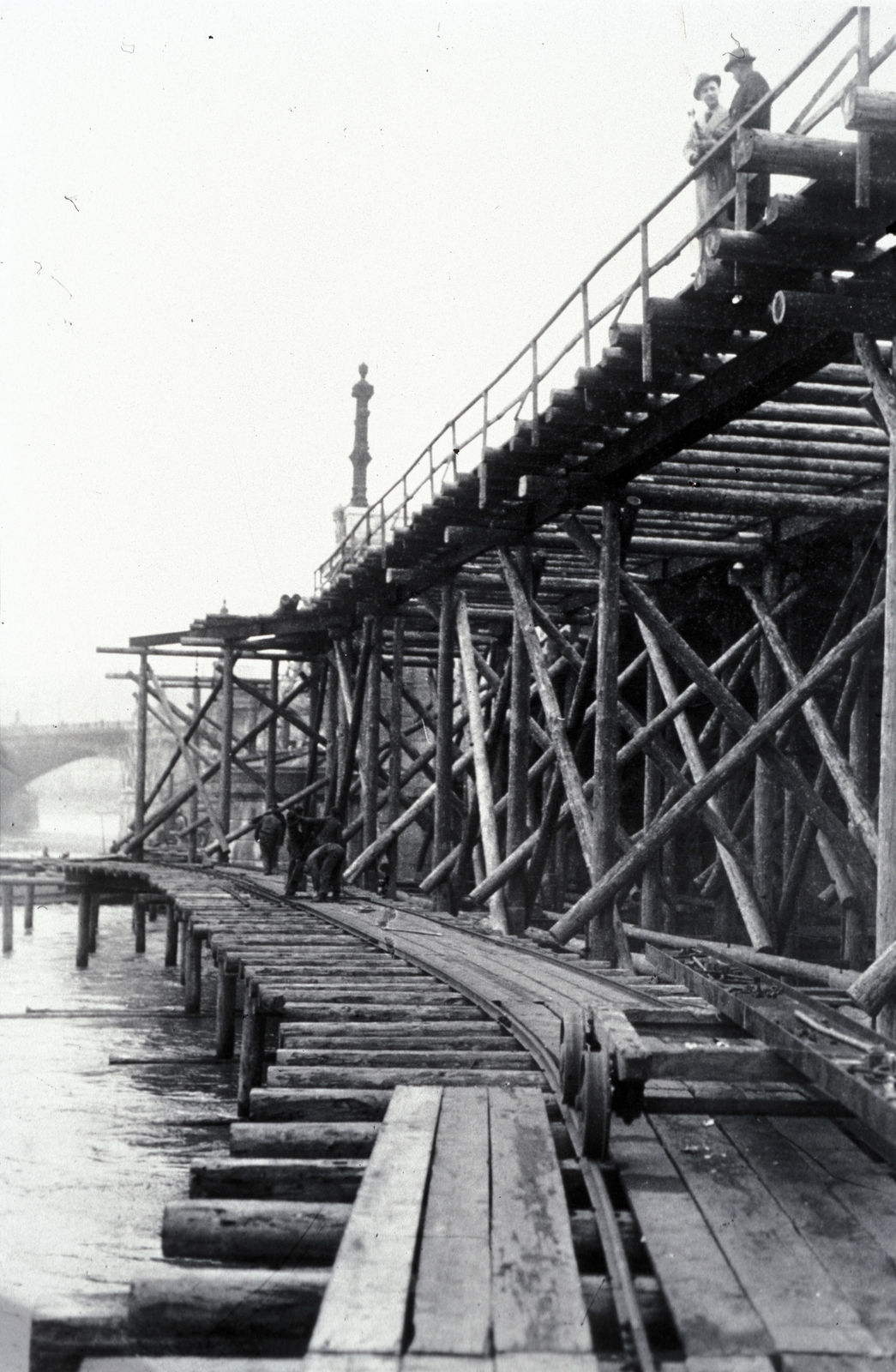
The widening works of Margit Bridge in 1935 (Photo: Fortepan/Reference No.: 204096)
However, in the mid-1930s, it was decided that the simplest solution would be to widen the Margit Bridge, according to the plans of Győző Mihailich, a professor at the University of Technology. In fact, there were no significant technical obstacles to this, as the Margit Bridge was an arch bridge, the track structure of which rested on 6 parallel, curved welded iron beams - main supports - in each opening. The widening of this bridge meant that the pillars were slightly extended to the south and the main support was built next to them.
Such a stunt would have been much more complicated on the other bridges in Budapest, but due to the specific structure of the Margit Bridge, it could be done while maintaining traffic, in fact, another bridge was built next to the old one. The ornaments and statues were moved from the pillars. Since the pillars could only be built in such a way that they overhung the bridge to the south for technical reasons, the small stone protrusions above the pillars at the southern railings were then formed.
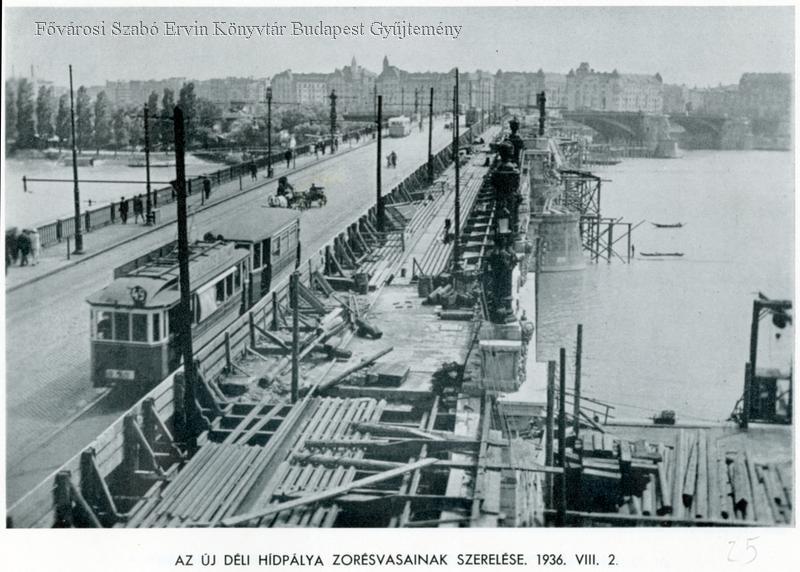
The Margit Bridge was widened while maintaining traffic, the picture was taken in 1936 (Photo: FSZEK Budapest Collection)
As a result, the bridge, which was 11.1 metres wide until then, became 16.8 metres wide, i.e., not 1, but 2 traffic lanes per direction could be created next to the tram. At that time, the pedestrian underpass was built in the middle of the bridge, in the pillar at the Margit Island connection, which was eliminated during the last renovation.
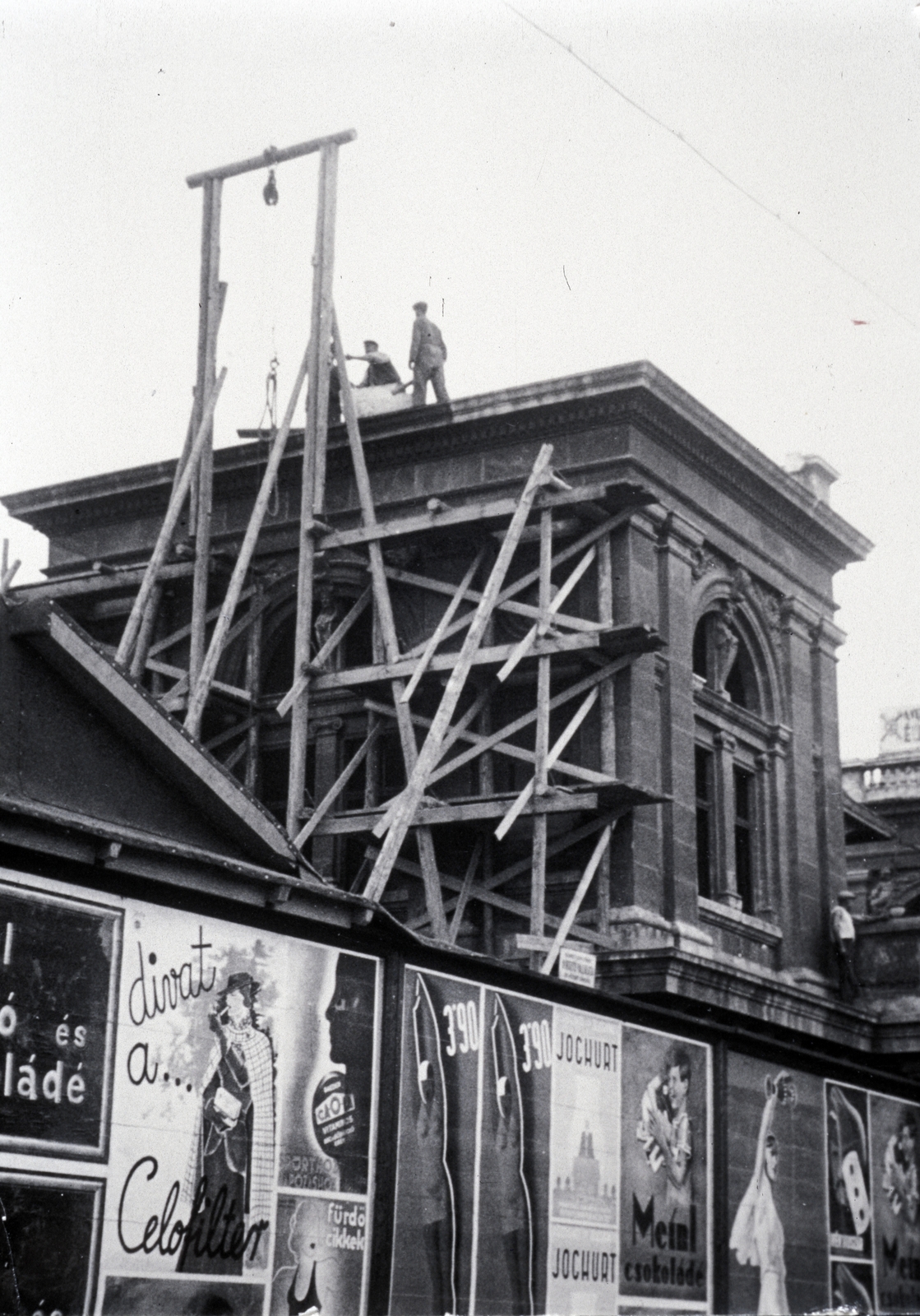
The customs houses were also rebuilt, despite the fact that toll collection ceased in 1918 (Photo: Fortepan/Reference No.: 204099)
They also modified the original bridge a bit, because until then the arches rested on the pillars with a flat base, which was no longer advantageous. In order for the structure to be more resistant to movements, thermal expansion, and the effects of traffic, heels were installed at the end of the arches, huge joints, which allowed the arches to move better, which is why the huge arches had to be raised by 7 millimetres with hydraulic jacks (all this while that the traffic flowed smoothly on the bridge).
With this, the load capacity of the structure built between 1872-1876, made using the techniques of the time and sized for horse-drawn carriages and horse-drawn trains, was able to be increased to that accepted in the modern age. The sidewalks previously covered with wooden planks were replaced with reinforced concrete slabs, which were covered with asphalt, and the tram tracks were placed from the edge of the roadway to the middle of it.
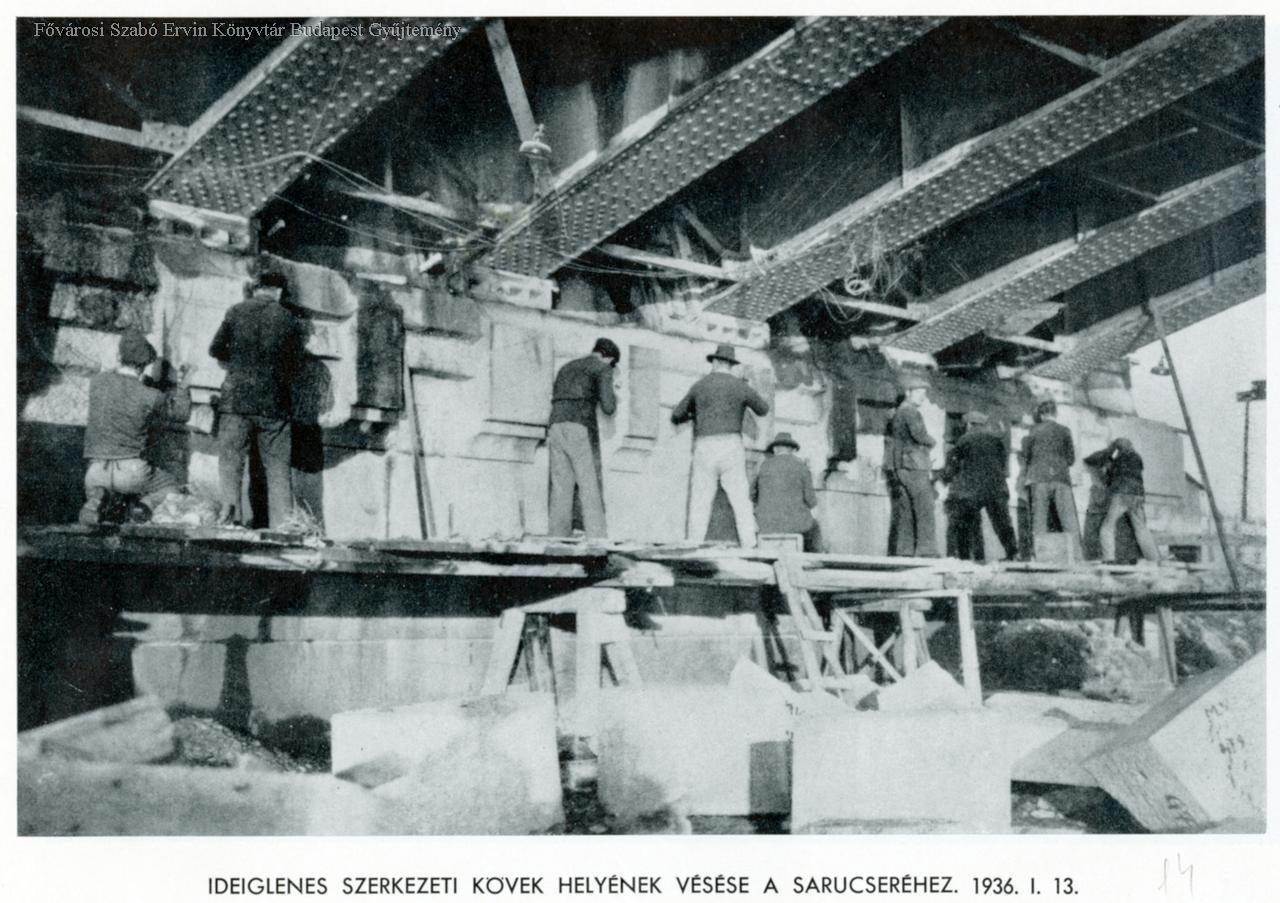
The heel replacement on the old structure (Photo: FSZEK Budapest Collection)
Of course, this work was not easy, since a more modern one had to be built next to a then 50-year-old structure, in a way that the engineers knew: the original structure was actually outdated, and the tests carried out in 1921 showed that there were problems with the welded iron structure made in the 1870s. For this reason, many compromises had to be made, all in such a way that, aesthetically, the bridge part carried by the two new main girders could not be different from the original structure.
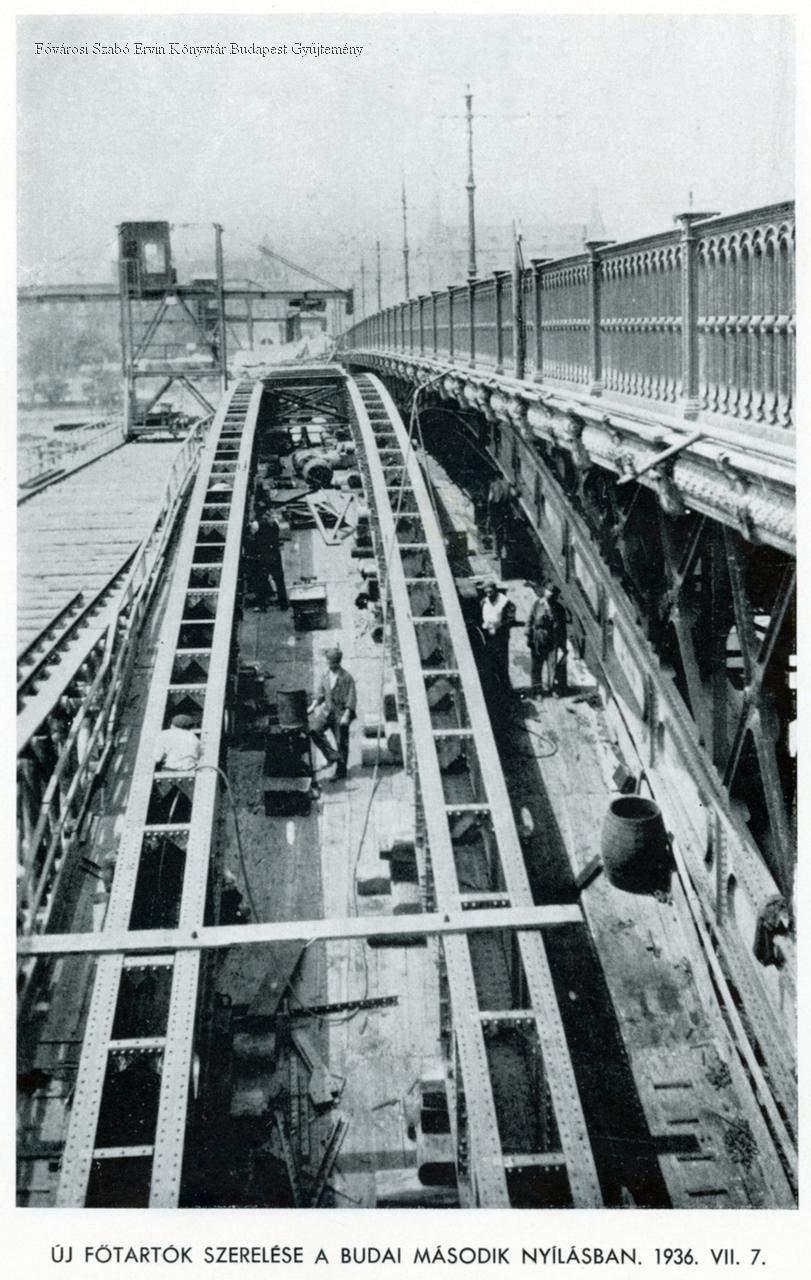
The two new southern main supports (Photo: FSZEK Budapest Collection)
Work began in May 1935 and was completed by 1937, the widened roadway was handed over on 1 October 1937. However, not everyone was happy because, despite earlier promises, a bicycle lane was not created on Margit Bridge. Friss Ujság wrote the following on 29 September 1937:
"At the time, cyclists were also promised by the Public Works Council that in the future they would not have to push their bicycles in front of them on the half-kilometre-long bridges, because they would provide a lane for them. It seems that the promise remained just a word because the cyclists of the capital are still forced to get off their bikes at the ends of the bridges and push their bikes across on foot at a slow pace. It is not possible to cross the widened Margit Bridge, the Chain Bridge and the Ferenc József Bridge by bicycle. Expensive tram tickets forced many workers, officials, and private employees to buy bicycles, and now the society of cyclists consists of serious, law-abiding citizens."
Although the bridge was completed, there was a minor traffic disturbance at the Buda bridgehead, mostly for trams. The borders of small sections, which are important for ticket purchases, changed, and due to the increased traffic, new lines had to be created, which involved reconstruction. On 29 October 1937, Friss Ujság summarised the situation as follows:
"The pavement, which was put back ten times, covered twenty times, has now been torn up again. Roadblocks block traffic again. Therefore there is still general confusion on the Buda side of Margit Bridge. There is no sign that Beszkárt wants to make changes for the benefit of the public. They still have not done anything, there are only promises."
Due to the increase in traffic, the public also expected new bus lines, but there were not enough buses.
The situation was finally settled, the wider and repainted shiny blue bridge was one of the most important crossings in Budapest, and also the northernmost one, as the Árpád Bridge connecting Óbuda with Újpest was still being planned.
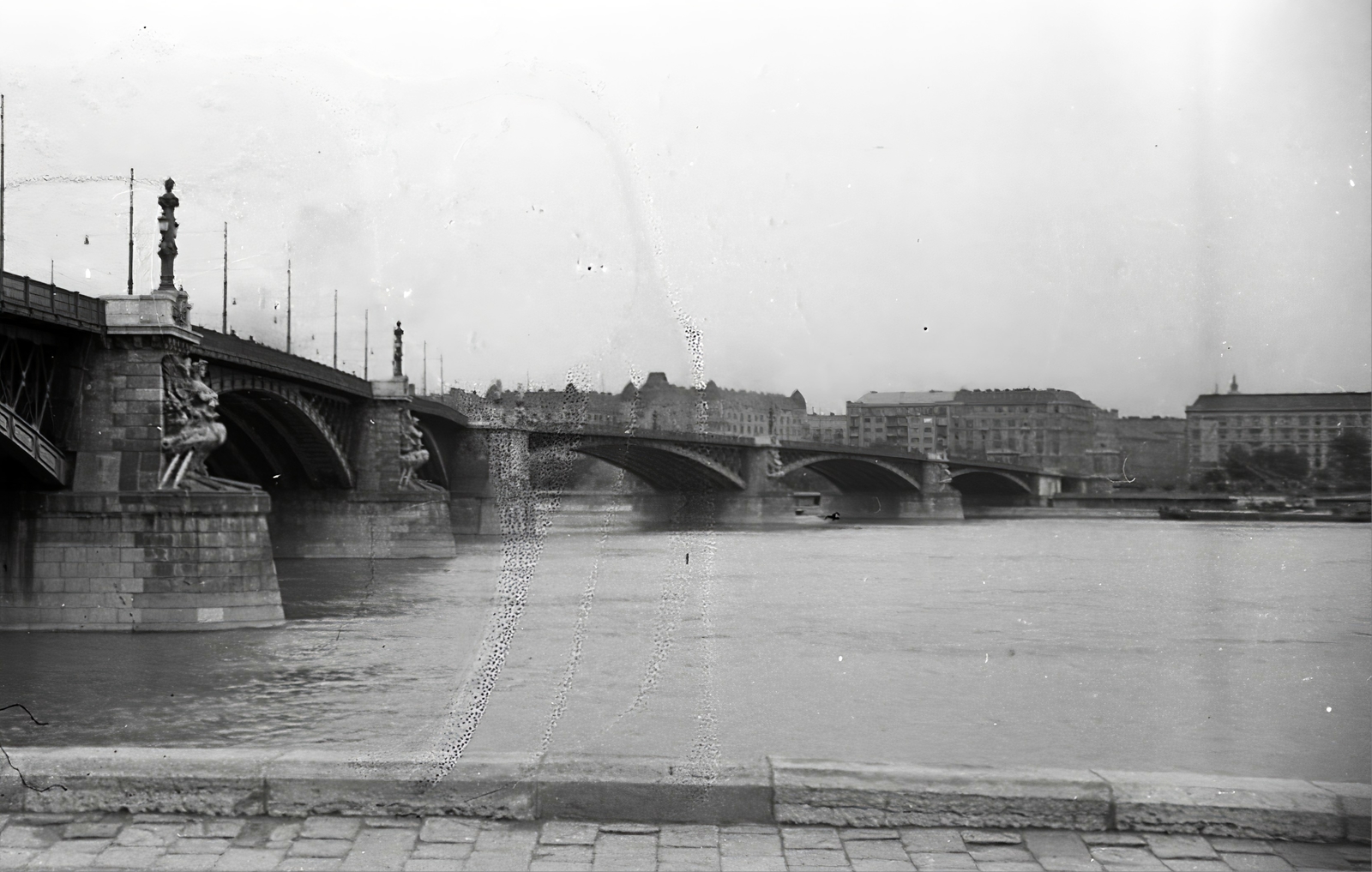
The widened Margit Bridge in 1940 (Photo: Fortepan/Reference No.: 174359)
The widened, newly renovated bridge did not last long for the population of Budapest, because on 4 November 1944, the bridge, which had been undermined by German troops, unexpectedly exploded in the midday traffic, destroying most of the bridge and claiming many hundreds of lives.
The still intact openings were blown up in January 1945. The new Margit Bridge was built in 1948, in a slightly different form than it was before the war.
Cover photo: The bridge before the reconstruction, in 1930 (Photo: FSZEK Budapest Collection)

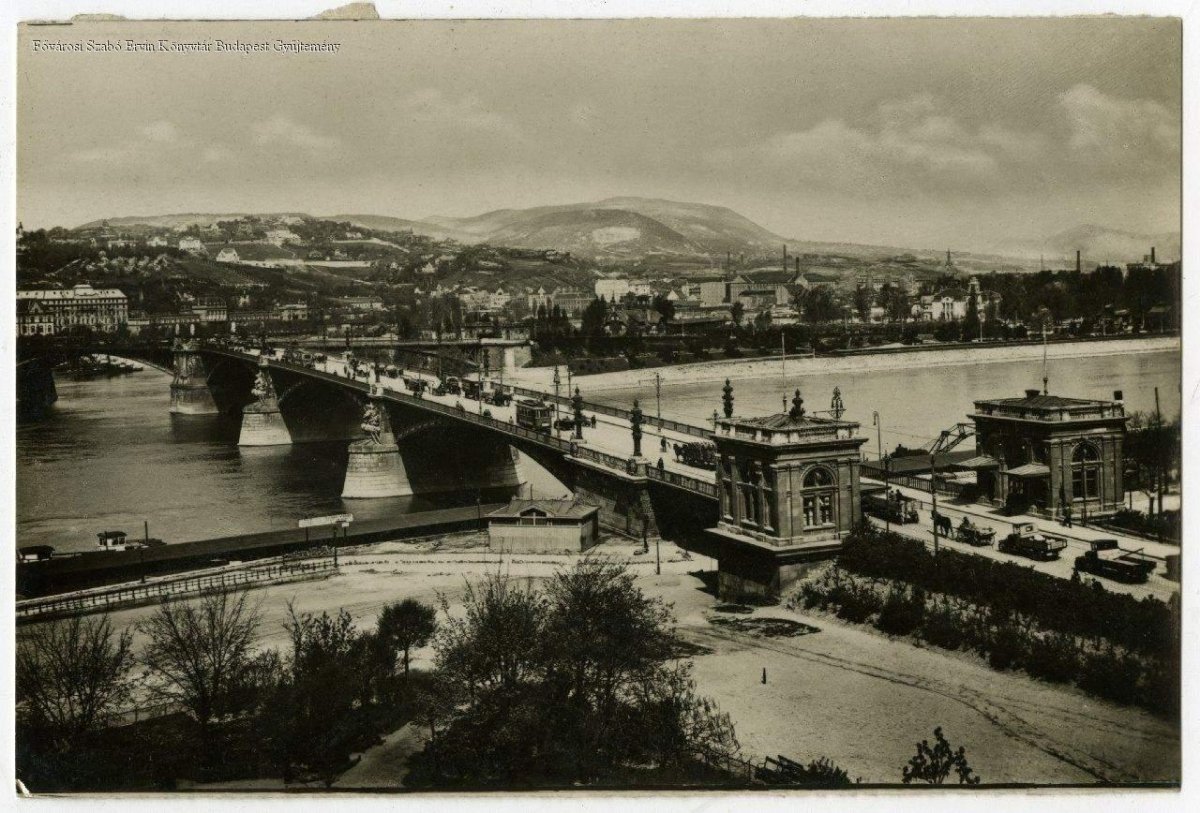


































Hozzászólások
Log in or register to comment!
Login Registration